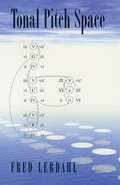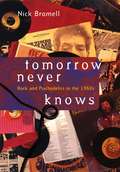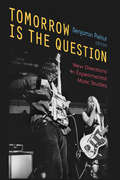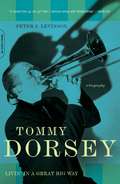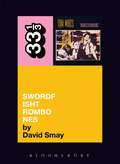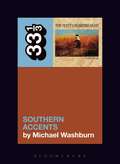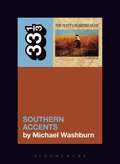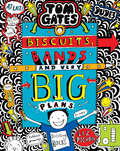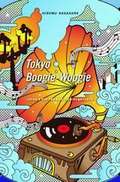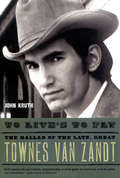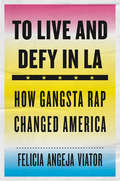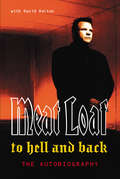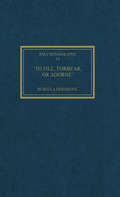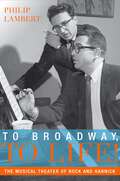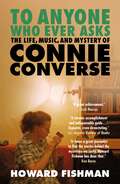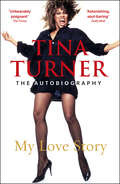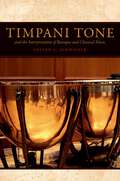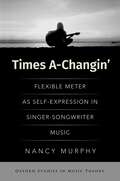- Table View
- List View
Tonal Pitch Space
by Fred LerdahlBuilding on the foundation of Lerdahl and Jackendoff's influential A Generative Theory of Tonal Music, this volume presents a multidimensional model of diatonic and chromatic spaces that quantifies listeners' intuitions of the relative distances of pitches, chords, and keys from a given tonic. The model is employed to assign prolongational structure, represent paths through the space, and compute patterns of tension and attraction as musical events unfold, thereby providing a partial basis for understanding musical narration, expectation, and expression. Conceived as both a music-theoretic treatise and a contribution to the cognitive science of music, this book will be of interest to music theorists, musicologists, composers, computer musicians, and cognitive psychologists.
Tomorrow Never Knows: Rock and Psychedelics in the 1960s
by Nick BromellTomorrow Never Knows takes us back to the primal scene of the 1960s and asks: what happened when young people got high and listened to rock as if it really mattered—as if it offered meaning and sustenance, not just escape and entertainment? What did young people hear in the music of Dylan, Hendrix, or the Beatles? Bromell's pursuit of these questions radically revises our understanding of rock, psychedelics, and their relation to the politics of the 60s, exploring the period's controversial legacy, and the reasons why being "experienced" has been an essential part of American youth culture to the present day.
Tomorrow Is the Question: New Directions in Experimental Music Studies
by Benjamin PiekutIn recent decades, experimental music has flourished outside of European and American concert halls. The principles of indeterminacy, improvisation, nonmusical sound, and noise, pioneered in concert and on paper by the likes of Henry Cowell, John Cage, and Ornette Coleman, can now be found in all kinds of new places: activist films, rock recordings, and public radio broadcasts, not to mention in avant-garde movements around the world. The contributors to Tomorrow Is the Question explore these previously unexamined corners of experimental music history, considering topics such as Sonic Youth, Julius Eastman, the Downtown New York pop avant-garde of the 1970s, Fluxus composer Benjamin Patterson, Tokyo’s Music group (aka Group Ongaku), the Balinese avant-garde, the Leicester school of British experimentalists, Cuba’s Grupo de Experimentación Sonora del ICAIC, Pauline Oliveros’s score for the feminist documentary Maquilapolis, NPR’s 1980s RadioVisions, and the philosophy of experimental musical aesthetics. Taken together, this menagerie of people, places, and things makes up an actually existing experimentalism that is always partial, compromised, and invented in its local and particular formations—in other words, these individual cases suggest that experimentalism has been a far more variegated set of practices and discourses than previously recognized. Asking new questions leads to researching new materials, new individuals, and new contexts and, eventually, to the new critical paradigms that are necessary to interpret these materials. Gathering contributions from historical musicology, enthnomusicology, history, philosophy, and cultural studies, Tomorrow Is the Question generates future research directions in experimental music studies by way of a productive inquiry that sustains and elaborates critical conversations.
Tommy Dorsey: Livin' in a Great Big Way, A Biography
by Peter J. LevinsonSwing has never gone out of style. It was the music the Greatest Generation danced to--and went to war to. And no musician evokes the Big Band era more strikingly than Tommy Dorsey, whose soaring trombone play and hit tunes influenced popular music for a generation. Tommy Dorsey (1905-1956) led a rich and complex life. Beginning with his childhood in the coal mining towns of Pennsylvania, we follow the young trombonist's journey to fame and fortune during the Jazz Age. Tommy, with his brother Jimmy, created one of the most popular bands of the era and played with such giants as Bing Crosby and Glenn Miller. They also launched the career of a skinny young singer named Frank Sinatra. But Tommy's volcanic personality eventually split the band and Tommy went off on his own. Drawing on exhaustive new research and scores of interviews with the musicians who knew him best, Levinson delves into Dorsey's famously eccentric lifestyle and his oversize appetite for drink, women, and perfection. The first biography on Dorsey in more than thirty years, Tommy Dorsey is a dazzling portrait of the Big Band's brightest star--his tumultuous life, his turbulent times, and the unforgettable music that made him a legend.
Tommy Dorsey: Livin' in a Great Big Way, A Biography
by Peter J. LevinsonSwing has never gone out of style. It was the music the Greatest Generation danced to--and went to war to. And no musician evokes the Big Band era more strikingly than Tommy Dorsey, whose soaring trombone play and hit tunes influenced popular music for a generation. Tommy Dorsey (1905-1956) led a rich and complex life. Beginning with his childhood in the coal mining towns of Pennsylvania, we follow the young trombonist's journey to fame and fortune during the Jazz Age. Tommy, with his brother Jimmy, created one of the most popular bands of the era and played with such giants as Bing Crosby and Glenn Miller. They also launched the career of a skinny young singer named Frank Sinatra. But Tommy's volcanic personality eventually split the band and Tommy went off on his own. Drawing on exhaustive new research and scores of interviews with the musicians who knew him best, Levinson delves into Dorsey's famously eccentric lifestyle and his oversize appetite for drink, women, and perfection. The first biography on Dorsey in more than thirty years, Tommy Dorsey is a dazzling portrait of the Big Band's brightest star--his tumultuous life, his turbulent times, and the unforgettable music that made him a legend.
Tom Waits' Swordfishtrombones (33 1/3)
by David SmayTwo entwined narratives run through the creation of Swordfishtrombones and form the backbone of this book. As the 1970s ended, Waits felt increasingly constrained and trapped by his persona and career. Bitter and desperately unhappy, he moved to New York in 1979 to change his life. It wasn't working. But at his low point, he got the phone call that changed everything: Francis Ford Coppola tapped Tom to write the score for One From the Heart. Waits moved back to Los Angeles to work at Zoetrope's Hollywood studio for the next 18 months. He cleaned up, disciplined himself as a songwriter and musician, collaborated closely with Coppola, and met a script analyst named Kathleen Brennan - his "only true love".  They married within 2 months at the Always and Forever Yours Wedding Chapel at 2am. Swordfishtrombones was the first thing Waits recorded after his marriage, and it was at Kathleen's urging that he made a record that conceded exactly nothing to his record label, or the critics, or his fans. There aren't many love stories where the happy ending sounds like a paint can tumbling in an empty cement mixer. Kathleen Brennan was sorely disappointed by Tom's record collection. She forced him out of his comfortable jazzbo pocket to take in foreign film scores, German theatre, and Asian percussion. These two stories of a man creating that elusive American second act, and also finding the perfect collaborator in his wife give this book a natural forward drive.
Tom Waits' Swordfishtrombones (33 1/3)
by David SmayTwo entwined narratives run through the creation of Swordfishtrombones and form the backbone of this book. As the 1970s ended, Waits felt increasingly constrained and trapped by his persona and career. Bitter and desperately unhappy, he moved to New York in 1979 to change his life. It wasn't working. But at his low point, he got the phone call that changed everything: Francis Ford Coppola tapped Tom to write the score for One From the Heart. Waits moved back to Los Angeles to work at Zoetrope's Hollywood studio for the next 18 months. He cleaned up, disciplined himself as a songwriter and musician, collaborated closely with Coppola, and met a script analyst named Kathleen Brennan - his "only true love". They married within 2 months at the Always and Forever Yours Wedding Chapel at 2am. Swordfishtrombones was the first thing Waits recorded after his marriage, and it was at Kathleen's urging that he made a record that conceded exactly nothing to his record label, or the critics, or his fans. There aren't many love stories where the happy ending sounds like a paint can tumbling in an empty cement mixer. Kathleen Brennan was sorely disappointed by Tom's record collection. She forced him out of his comfortable jazzbo pocket to take in foreign film scores, German theatre, and Asian percussion. These two stories of a man creating that elusive American second act, and also finding the perfect collaborator in his wife give this book a natural forward drive.
Tom Petty’s Southern Accents (33 1/3)
by Michael WashburnBy 1985 Tom Petty had already obtained legendary status. He had fame. He had money. But he was restless, hoping to stretch his artistry beyond the confining format of songs like “The Waiting” and “Refugee.” Petty's response to his restlessness was Southern Accents. Initially conceived as a concept album about the American South, Southern Accents's marathon recording sessions were marred by aesthetic and narcotic excess. The result is a hodgepodge of classic rock songs mixed with nearly unlistenable 80s music. Then, while touring for the album, Petty made extensive use of the iconography of the American Confederacy, something he soon came to regret. Despite its artistic failure and public controversy, Southern Accents was a pivot point for Petty. Reeling from the defeat, Petty reimagined himself as deeply, almost mythically, Californian, obtaining his biggest success with Full Moon Fever. Michael Washburn explores the history of Southern Accents and how it sparked Petty's reinvention. Washburn also examines how the record both grew out of and reinforced enduring but flawed assumptions about Southern culture and the Lost Cause of the Confederacy.
Tom Petty’s Southern Accents (33 1/3 #139)
by Michael WashburnBy 1985 Tom Petty had already obtained legendary status. He had fame. He had money. But he was restless, hoping to stretch his artistry beyond the confining format of songs like “The Waiting” and “Refugee.” Petty's response to his restlessness was Southern Accents. Initially conceived as a concept album about the American South, Southern Accents's marathon recording sessions were marred by aesthetic and narcotic excess. The result is a hodgepodge of classic rock songs mixed with nearly unlistenable 80s music. Then, while touring for the album, Petty made extensive use of the iconography of the American Confederacy, something he soon came to regret. Despite its artistic failure and public controversy, Southern Accents was a pivot point for Petty. Reeling from the defeat, Petty reimagined himself as deeply, almost mythically, Californian, obtaining his biggest success with Full Moon Fever. Michael Washburn explores the history of Southern Accents and how it sparked Petty's reinvention. Washburn also examines how the record both grew out of and reinforced enduring but flawed assumptions about Southern culture and the Lost Cause of the Confederacy.
Tom Gates: Biscuits, Bands And Very Big Plans (Tom Gates Ser. #14)
by Liz PichonBritain's favourite doodle genius and caramel wafer-muncher is back! Yup: Tom Gates and his band The DogZombies have some big plans that need to be actioned, like, NOW! First they need to catch a glimpse into Delia's secret diary. But that'll mean taking a BIG risk: snooping in her room! Oh, and then they're going to write a new smash-hit single. (Which means stocking up on essential snacks.) Plus, Tom's got to doodle as much as possible, _especially_ when the pea-brained Marcus is watching! It's lucky Tom's fuelled by biscuits, or he'd never have the energy for it all...
Tokyo Boogie-Woogie: Japan’s Pop Era and Its Discontents
by Hiromu NagaharaEmerging in the 1920s, the Japanese pop scene gained a devoted following, and the soundscape of the next four decades became the audible symbol of changing times. In the first English-language history of this Japanese industry, Hiromu Nagahara connects the rise of mass entertainment with Japan’s transformation into a postwar middle-class society.
Tokyo Boogie-Woogie: Japan’s Pop Era and Its Discontents
by Hiromu NagaharaEmerging in the 1920s, the Japanese pop scene gained a devoted following, and the soundscape of the next four decades became the audible symbol of changing times. In the first English-language history of this Japanese industry, Hiromu Nagahara connects the rise of mass entertainment with Japan’s transformation into a postwar middle-class society.
To Live's to Fly: The Ballad of the Late, Great Townes Van Zandt
by John KruthAt last, the authorized biography of Townes Van Zandt (1944-1997), who wrote such unforgettable songs as "Pancho & Lefty” and "If I Needed You.” Born to a wealthy oil family in Ft. Worth, Texas, hounded by alcoholism and depression, Van Zandt pursued a nomadic existence following his muse, whatever the cost to himself, friends, and relatives. Based on exclusive interviews with those close to Van Zandt, including his best friend Guy Clark and colleagues like Steve Earle and John Prine, To Live's to Fly captures all the humor, hijinks, poetry, and heartbreak of this revered, genuinely outlaw country artist.
To Live and Defy in LA: How Gangsta Rap Changed America
by Felicia Angeja ViatorHow gangsta rap shocked America, made millions, and pulled back the curtain on an urban crisis. How is it that gangsta rap—so dystopian that it struck aspiring Brooklyn rapper and future superstar Jay-Z as “over the top”—was born in Los Angeles, the home of Hollywood, surf, and sun? In the Reagan era, hip-hop was understood to be the music of the inner city and, with rare exception, of New York. Rap was considered the poetry of the street, and it was thought to breed in close quarters, the product of dilapidated tenements, crime-infested housing projects, and graffiti-covered subway cars. To many in the industry, LA was certainly not hard-edged and urban enough to generate authentic hip-hop; a new brand of black rebel music could never come from La-La Land. But it did. In To Live and Defy in LA, Felicia Viator tells the story of the young black men who built gangsta rap and changed LA and the world. She takes readers into South Central, Compton, Long Beach, and Watts two decades after the long hot summer of 1965. This was the world of crack cocaine, street gangs, and Daryl Gates, and it was the environment in which rappers such as Ice Cube, Dr. Dre, and Eazy-E came of age. By the end of the 1980s, these self-styled “ghetto reporters” had fought their way onto the nation’s radio and TV stations and thus into America’s consciousness, mocking law-and-order crusaders, exposing police brutality, outraging both feminists and traditionalists with their often retrograde treatment of sex and gender, and demanding that America confront an urban crisis too often ignored.
To Hell And Back: An Autobiography
by David Dalton Meat LoafMeat Loaf's bizarre and spectacular life story is scarcely credible. After surviving an abusive childhood, during which he was almost murdered by his alcoholic father, he starred in one of the biggest stage and film musicals ever, then went on to record the third best-selling album of all time.To Hell and Back is the true story of a man who ran away from a cruel home life at 17 and starred in the legendary Rocky Horror Picture Show before turning to rock 'n' roll. His first album, Bat Out Of Hell, was considered so uncommercial by his first record label that they dropped him - only for it to go on to sell 20 million copies worldwide. He then spent the 1980s on the skids, with a severe drink and drugs problem and mounting money problems leading him to a nervous breakdown, before making a triumphant comeback with 1993's album Bat Out Of Hell II and colossal hit single 'I'd Do Anything For Love'.This is an extraordinary story and a classic rock autobiography.
'To fill, forbear, or adorne': The Organ Accompaniment of Restoration Sacred Music
by Rebecca HerissoneThis is the first study to provide a systematic and thorough investigation of continuo realization styles appropriate to Restoration sacred music, an area of performance practice that has never previously been properly assessed. Rebecca Herissone undertakes detailed analysis of a group of organ books closely associated with the major Restoration composers Purcell, Blow and Humfrey, and the London institutions where they spent their professional lives. By investigating the relationship between the organ books' two-stave arrangements and full scores of the same pieces, Herissone demonstrates that the books are subtle sources of information to the accompanist, not just short or skeleton scores. Using this evidence, she formulates a model for continuo realization of this repertory based on the doubling of vocal parts, an approach that differs significantly from that adopted by most modern editors, and which throws into question much of the accepted continuo practice in modern performance of this repertory.
'To fill, forbear, or adorne': The Organ Accompaniment of Restoration Sacred Music
by Rebecca HerissoneThis is the first study to provide a systematic and thorough investigation of continuo realization styles appropriate to Restoration sacred music, an area of performance practice that has never previously been properly assessed. Rebecca Herissone undertakes detailed analysis of a group of organ books closely associated with the major Restoration composers Purcell, Blow and Humfrey, and the London institutions where they spent their professional lives. By investigating the relationship between the organ books' two-stave arrangements and full scores of the same pieces, Herissone demonstrates that the books are subtle sources of information to the accompanist, not just short or skeleton scores. Using this evidence, she formulates a model for continuo realization of this repertory based on the doubling of vocal parts, an approach that differs significantly from that adopted by most modern editors, and which throws into question much of the accepted continuo practice in modern performance of this repertory.
To Broadway, To Life!: The Musical Theater of Bock and Harnick (Broadway Legacies)
by Philip LambertTo Broadway, To Life! The Musical Theater of Bock and Harnick is the first complete book about these creative figures, one of Broadway's most important songwriting teams. The book draws from personal interviews with Bock and Harnick themselves to offer an in-depth exploration their shows, including Fiddler on the Roof, She Loves Me, and Fiorello!, and their greater place in musical theater history.
To Broadway, To Life!: The Musical Theater of Bock and Harnick (Broadway Legacies)
by Philip LambertTo Broadway, To Life! The Musical Theater of Bock and Harnick is the first complete book about these creative figures, one of Broadway's most important songwriting teams. The book draws from personal interviews with Bock and Harnick themselves to offer an in-depth exploration their shows, including Fiddler on the Roof, She Loves Me, and Fiorello!, and their greater place in musical theater history.
To Anyone Who Ever Asks: The Life, Music, and Mystery of Connie Converse
by Howard FishmanThe mysterious true story of Connie Converse - a mid-century New York singer and songwriter whose haunting music never gained widespread recognition - and one writer's quest to understand her life.When musician and New Yorker contributor Howard Fishman first heard a Connie Converse recording, he was convinced she could not be real. Her music was too out of place for the 1950s to make sense - a singer who bridged the gap between traditional Americana, pop standards, and the singer-songwriter movement that exploded a decade later with Bob Dylan and Joni Mitchell.Fishman was determined to know more about this artist and how she slipped through the cracks of music history but there was one problem: in 1974, at the age of fifty, Converse simply drove off one day and was never heard from again.After a dozen years of research, Fishman expertly weaves a narrative of her life and music, and of how it has come to speak to him as both an artist and a person.It is by turns a hopeful, inspiring, melancholy, and chilling story of dark family secrets, taciturn New England traditions, a portrait of 1950s Greenwich Village, of a visionary intellect and talent, and a woman who fiercely strove for independence when the odds were against her. Ultimately, Fishman places Converse in the canon as a vital, overlooked trailblazer, a missing link pre-empting the reflective, complex, arresting music that transformed the 1960s and music forever.
Tina Turner (Official Autobiography): A Memoir
by Tina Turner_______________________‘Astonishing, soul-baring – the must-read memoir by rock’s greatest survivor’ DAILY MAIL'Unbearably poignant' THE TIMES, Book of the Week*** The full, dramatic story of one of the most remarkable women in music history, celebrating Tina Turner’s 60th year in the industry ***_______________________Love’s got everything to do with it.Tina Turner is the Queen of Rock ‘n’ Roll, a musical icon celebrating her 60th year in the industry. In this dramatic autobiography, she tells the story of a truly remarkable life in the spotlight.From her early years picking cotton in Nutbush, Tennessee to her rise to fame alongside Ike Turner, and finally to her phenomenal success in the 1980s and beyond, Tina candidly examines her personal history, from her darkest hours to her happiest moments and everything in between.In her honest and heart-felt voice, Tina reveals:· How (love) and a kidney transplant saved her life – and how her new husband made an incredible personal sacrifice· How she has coped with the tragic suicide of her son· How ex-husband Ike Turner forced her to go to a brothel on their wedding night… and why she tried to kill herself because of Ike’s mistresses · The Cinderella moment when David Bowie made Tina a star …· …and the day Mick Jagger ripped her skirt off!AND MUCH MOREBrimming with her trademark blend of strength, energy, heart and soul, My Love Story is a gripping, surprising memoir, as memorable and entertaining as any of her greatest hits.
Timpani Tone and the Interpretation of Baroque and Classical Music
by Steven L. SchweizerTimpani Tone and the Interpretation of Baroque and Classical Music explores the nature, production, and evolution of timpani tone and provides insights into how to interpret the music of J. S. Bach, Handel, Haydn, and Mozart. In drawing on 31 years of experience, Steven L. Schweizer focuses on the components of timpani tone and methods for producing it. In so doing, he discusses the importance of timpani bowl type; mallets; playing style; physical gestures; choice of drums; mallet grip; legato, marcato, and staccato strokes; playing different parts of the timpano head; and psychological openness to the music in effectively shaping and coloring timpani parts. In an acclaimed chapter on interpretation, Schweizer explores how timpanists can use knowledge of the composer's style, psychology, and musical intentions; phrasing and articulation; the musical score; and a conductor's gestures to effectively and convincingly play a part with emotional dynamism and power. The greater part of the book is devoted to the interpretation of Baroque and Classical orchestral and choral music. Meticulously drawing on original sources and authoritative scores from the seventeenth through nineteenth centuries, Schweizer convincingly demonstrates that timpanists were capable of producing a broader range of timpani tone earlier than is normally supposed. The increase in timpani size, covered timpani mallets, and thinner timpani heads increased the quality of timpani tone; therefore, today's timpanist's need not be entirely concerned with playing with very articulate sticks. In exhaustive sections on Bach, Handel, Haydn, and Mozart, Schweizer takes the reader on an odyssey through the interpretation of their symphonic and choral music. Relying on Baroque and Classical performance practices, timpani notation, the composer's musical style, and definitive scores, he interprets timpani parts from major works of these composers. Schweizer pays particular attention to timpani tone, articulation, phrasing, and dynamic contouring: elements necessary to effectively communicate their part to listeners.
Times A-Changin': Flexible Meter as Self-Expression in Singer-Songwriter Music (OXFORD STUDIES IN MUSIC THEORY)
by Nancy MurphyIn 1960s and 1970s singer-songwriter music, some artists used malleable metric settings alongside other features of self-expression in performance. This resulted in songs with extremes of self-expressive timing flexibility that cannot be accounted for using a single conception of meter. This book proposes a theory of flexible meter that recasts metric structure as encompassing the variety of metric scenarios presented by the self-expressive performance practice of singer-songwriters, from metric regularity to metric ambiguity, and vacillations between these two possibilities. Author Nancy Murphy explores performances by Joni Mitchell, Bob Dylan, Buffy Sainte-Marie, Paul Simon, and Cat Stevens to investigate the individual metric style of each artist and how their flexible metric techniques contribute to the self-expressive rhetoric of the singer-songwriter performance tradition.
Times A-Changin': Flexible Meter as Self-Expression in Singer-Songwriter Music (OXFORD STUDIES IN MUSIC THEORY)
by Nancy MurphyIn 1960s and 1970s singer-songwriter music, some artists used malleable metric settings alongside other features of self-expression in performance. This resulted in songs with extremes of self-expressive timing flexibility that cannot be accounted for using a single conception of meter. This book proposes a theory of flexible meter that recasts metric structure as encompassing the variety of metric scenarios presented by the self-expressive performance practice of singer-songwriters, from metric regularity to metric ambiguity, and vacillations between these two possibilities. Author Nancy Murphy explores performances by Joni Mitchell, Bob Dylan, Buffy Sainte-Marie, Paul Simon, and Cat Stevens to investigate the individual metric style of each artist and how their flexible metric techniques contribute to the self-expressive rhetoric of the singer-songwriter performance tradition.
